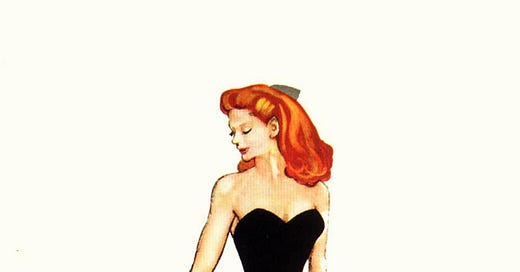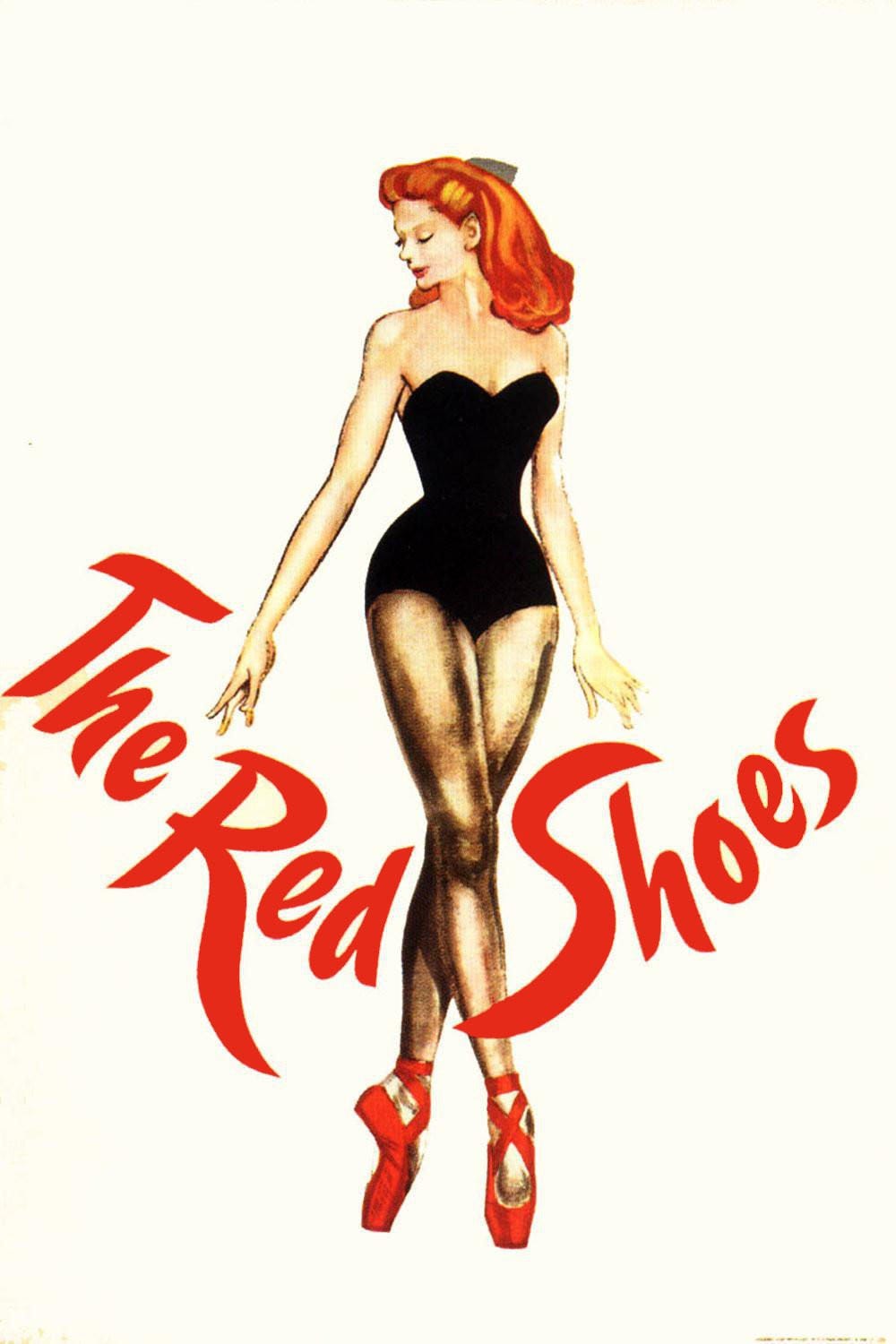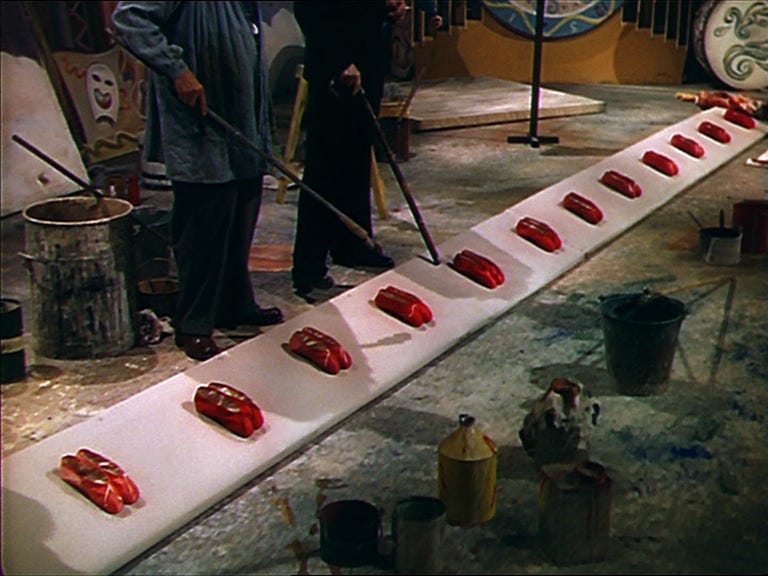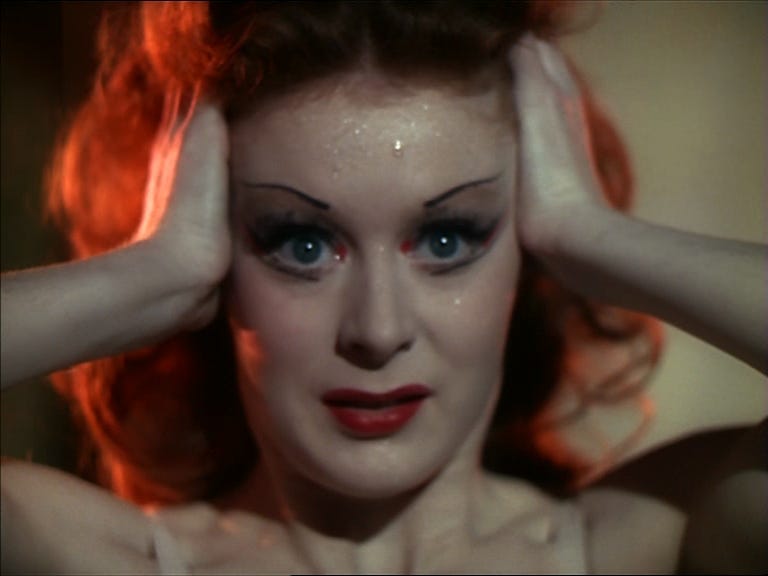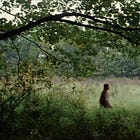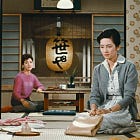Winter Roundup
The Red Shoes (1948), Shadows of Forgotten Ancestors (1967), Gladiator II (2024) Heretic (2024), & The Rest is History LIVE SHOW!
A roundup of holiday viewing recommendations + recapping my favorite concert live podcast show of the year.
🎄🎁🎄🐭💃🏻🎄🎁🎄💃🏻🎄🎁🎄🐭🎄🎁🎄💃🏻🎄🎁🎄🐭💃🏻
If you missed my gift guide for the film and arts lover in your life, be sure to check it out here - there’s still time to shop! I know I still need to!
The recs ~
🩰 🥀 The Red Shoes
The Red Shoes isn’t exactly a Christmas movie. In fact, it’s not a Christmas movie at all and isn’t even set in the winter, but I wouldn’t dream of watching it in a warmer month because it’s one of the most sumptuous, magical, and nostalgic films out there. It’s about a ballerina who rises to top dancer at her company after originating a role in the mysterious ballet called The Red Shoes, based on a Hans Christian Anderson tale. But don’t be fooled by the gorgeous technicolor and beautiful set pieces: like most of Anderson’s stories, this one has a tragically dark and twisted ending as well.
Ballet is, of course, most closely associated with wintertime because of the most commercially successful ballets, the Nutcracker and Swan Lake, and if you’re looking for more ballet-centric films this season, check out the replies to to this twitter user’s post for a great place to start.
Back to The Red Shoes - it is simply one of the most gorgeous movies you will ever have the privilege of fixing your eyes to (I mean look at that poster alone!) I remember a friend of mine from CalArts remarking something about it like, “a movie has no business being this stunning,” to which I obviously disagree (we deserve gorgeous movies!) but I hope their sentiment entices you to give it a look. It’s a classic story about a young female artist torn between her love for her art and, well, love. This is a dynamic young artistic women face repeatedly, and one that outsiders have many, many secondhand opinions on: this is perhaps best exemplified by the recent drama over Hannah Needlman a.k.a. Ballerina Farm’s exposé from the fall where the former Juilliard Ballerina revealed she quit dancing to start her now-Instagram-perfect-farm-family. The Red Shoes doesn’t quite get that deep into the weeds, instead foregrounding the actual art of ballet and music to reveal the emotional yearnings and psychological underpinnings of each character. Like any good dance movie, the pinnacle of the film is the spectacular ballet sequence, which clocks in at just under 20 minutes and mesmerizes you for every single second of it.
🦁 Gladiator II
I wasn’t expecting this to be one of my top movies of the year, but Gladiator II is freaking awesome. Starting with the opening credit sequence (a beautiful, hand-painted-looking animation that recaps where the previous Gladiator story left off), this film just hooked me from the first seconds through to the very end. The pace and momentum are truly epic: I didn’t feel a slow moment in the entire film, and I was particularly interested in the political intrigue that intersperse each magnificent battle sequence. It’s set in the 3rd century of the Roman Empire, a time known by Roman Historians as the “Crisis of the Third Century,” when a series of ineffective emperors were constantly starting wars and then getting assassinated for their own obvious weaknesses. The sinister (and syphillised) dual emperors are such wicked antagonists, and Paul Mescal shines brilliantly against them, both metaphorically and literally. Gladiator II is simply gorgeous - especially compared to other big budget box office recent hits: the cinematography is lush, golden, and intentional, and while typically any type of grand CGI gives me an unceasing headache, I thought it looked pretty good on the iMax screen. It’s the perfect blend of fantasy and non-fiction, I seriously can’t recommend it enough.
🕯️ 💀 Heretic
Another spectacular film from this fall, Heretic directed by Scott Beck and Bryan Woods is a small but mighty horror film that centers around two young female Mormon Missionaries who go to Hugh Grant’s house to evangelize him. It quickly descends into one of the most freakish yet fascinating horror films I’ve ever seen. The way it tackles the subject of religion and fundamentalism is shockingly direct: Hugh Grant (who is sinisterly excellent in this role) literally and plainly talks about his obsessions with religion and belief in a way that, in another filmmaker’s hands, might be expository and totally boring, but somehow here makes total sense. As someone whose work often tackles religious themes, my jaw hit the floor after one of Grant’s monologues because he’s just…. talking about religion? with no metaphors or any larger vessel for his curiosities! Like, you can just DO that? you don’t have to hide your inherent themes within some sort of narrative conceit, you can literally. just.have a character. SAY THEM?!!?!?!? huge!!
🪞⛰️ Shadows of Forgotten Ancestors
I can’t find the exact quote, but before the American Cinematheque’s screening of Sergei Parajanov’s Shadows of Forgotten Ancestors, the programmer mentioned that Jean-Luc Godard said of this film that Parajanov had succeeded in translating poetry to cinema, where most other filmmakers only succeed in producing “prose”. Despite the pretentiousness of the statement, he’s absolutely right. Parajanov, a Soviet film director, was a master of cinema as a visual language. There’s no other way to describe this film other than poetic - it’s a folkloric story about a tragic romance in the Carpathian Mountains, and it feels like it captures a group of people from an entirely different universe, although it was made and was set in the late 1960s. The visuals and soundscapes are unsettling, dizzying, intoxicating, and vidid, and it takes you on a mesmerizing journey you WILL have dreams about for nights to come. In fact, Shadows of Forgotten Ancestors feels like a total dream in the way it’s constructed and executed. Parajanov and his cameraman Yuri Ilyenko described their filming process as a way “to experiment with a handheld camera, striving in some way to imitate a whirlpool which draws everything into it.” I feel really luck to have seen it at the Egyptian, as part of the American Cinematheque’s recent series on Parajanov’s work.
The recap ~
🎤 🇬🇧 THE REST IS HISTORY LIVE! 🇬🇧 🎤
This was just lovely. As I’ve often said, I am obsessed with two British boomers named Dominic Sandbrook and Tom Holland (not the actor). They recently had a live show in LA and it was just so much fun: the first half, they echoed the podcast in taking us on a thematic journey focused on some other delightful British men who made their way in America, and then the second half was an audience Q&A. I splurged on second row tickets, and it was fascinating to catch a glimpse of their prepared notes: they appear to be written in essay format (like, big paragraphs as opposed to bullet points/ outline), and yet despite having a lot written out, they rarely glanced down, are complete naturals onstage, and just as excellent speakers and collaborators in person as on the pod. I’ve long wondered how much editing goes into the podcast (ie, do they have to cut out a lot awkward pauses/overlapping chatter/ stutters, etc.), but the entire evening was seamless. Holland especially is so engaging and has such charismatic warmth to him - Evan literally remarked that he was “a truly handsome man” despite his reputation as the gawky, awkward one. But my place on team Sandbrook grows more and more fervent with every episode: his curmodgeonly wit masks such a gentle kindness. The second half they answered questions from the audience, and although I believe they prepared for the questions during the intermission, I just continue to be amazed at how smoothly and naturally they execute things on the Rest is History. I feel very blessed I was able to see them do it in the flesh!
Thank you for reading! If you’re hungry for more….


